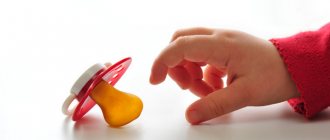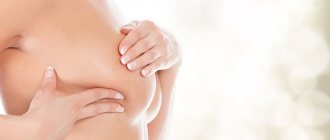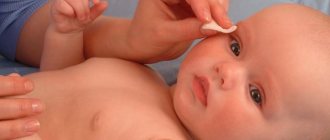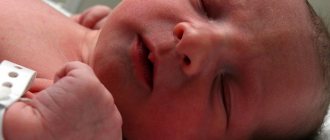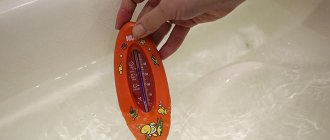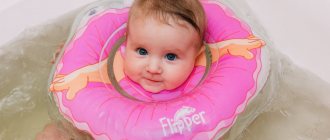Almost all kids are reluctant to accept such a replacement, starting to be capricious. They often spit out the pacifier, after which they begin to make extremely loud noises. Fortunately, there are several ways to teach a pacifier.
Why does a child need a pacifier?
Each of us is assigned a number of reflexes at birth. One of them is sucking. He constantly demands satisfaction, regardless of whether the baby is really hungry or not. If feeding occurs naturally, there is no need to worry: the baby is unlikely to require additional time for sucking exercises. But with artificial feeding, the baby sucks a bottle. The process is similar, but it involves fewer muscle groups. The baby wants to suck more, and for this a pacifier is needed. With its help, you can calm and distract the baby from his whims, and at the same time allow him to stretch all the necessary muscles.
If demanding crying does not help, and the child still has not received the coveted pacifier, he begins to look for substitutes. They can be objects that are within reach: a toy, the edge of a blanket, a hand - all fairly convenient nearby objects will be pulled into the mouth. Such sucking exercises not only lead to the possibility of infection with dangerous microorganisms, but can also change the baby's bite. At an older age, children experience many problems due to malocclusion. To reduce the risk of malocclusion, you need to choose the right pacifier for your child according to the shape of his mouth.
Video: When do children need a pacifier?
When to start pacifier training
It is not recommended to give your baby a pacifier earlier than 3-4 weeks after birth. In the first weeks, he learns to properly latch onto his mother's nipple. Her milk production is normalized. If you start giving a pacifier to your baby in the very first days, then he may soon refuse the breast, preferring to suck on a pacifier. The mother, due to the rare attachments of the baby to her, may not develop lactation. At first there will be very little milk, and then it will disappear completely.
If a child was born prematurely, has very little weight or poor health, then it is recommended to start accustoming him to a pacifier no earlier than 2-3 months.
Bite-forming pacifiers can be given to an infant from six months of age.
Is it necessary to accustom a child to a pacifier?
Some parents tend to correct any unusual behavior of the baby with the help of a pacifier. Is he being capricious? Dummy. Having trouble sleeping? Dummy. But this subject has nothing to do with sleep problems. If the baby has difficulty falling asleep, you need to take time and rock it in your arms. A baby who is already sleeping does not need to put a pacifier that has fallen out of his mouth.
You should also not get carried away with nipples if the child is over 1 year old. This will no longer be normal, because during the first year of life the baby’s sucking reflex is completely satisfied. Therefore, even if the baby stubbornly continues to ask for a pacifier, he should be weaned from this habit.
As a rule, after a year this becomes just a habit, that is, the child does not feel a real need to suck. The muscles are already developed, and the problem lies in psychology. The baby experiences stress from too much or too little attention. And the first reaction to such experiences is to do the usual thing. If the child is not weaned off the pacifier in time, this protective mechanism may develop into enuresis or stuttering as they grow older. Therefore, a pacifier after a year is not a cute quirk, but a symptom of a psychological disorder.
By the age of two, if the pacifier is not removed, the child’s jaws in most cases become severely deformed. As a result, not only milk teeth, but also permanent teeth will be crooked. Along with a bad bite comes a series of oral problems, improper breathing, incorrect pronunciation and even problems with the lips. Dependence on the pacifier at this age takes the form of pathology. A child cannot throw a pacifier on his own, and parents can only psychologically break him. At two years of age, to wean yourself off the pacifier, you will have to work with a competent psychotherapist.
Does a newborn need a pacifier?
Before you decide to use a pacifier, you should find out why babies need it in the first place. Especially, does your baby need it?
- According to pediatricians, the pacifier helps satisfy the sucking reflex in children. In the first half of life, it is very developed and is realized through sucking at the mother’s breast. However, if breastfeeding is infrequent or absent altogether, this reflex cannot be replenished. As a result, starting from 6 months, the baby may begin to actively suck fingers or foreign objects. It can be extremely difficult to wean him off this.
- If the baby behaves calmly and sucks enough when breastfeeding, then a pacifier is not needed at all
- If the child is nervous, screams and cries, then the pacifier often becomes a life-saver to calm the baby
- The pacifier should not replace breastfeeding or maternal contact
- It is recommended to give a pacifier from 3 months. By 6 months it’s time to wean off the pacifier.
- The pacifier can be given for short periods of time and should be removed from the baby's mouth while the baby is sleeping.
Pacifier
How to quickly teach a child to use a pacifier
To accustom your baby to a pacifier, you should know and follow a number of simple sequences:
- To accustom your child to a pacifier, you need to immediately give him a pacifier after breastfeeding or as soon as he wakes up.
- Before offering your baby a pacifier, lubricate it generously with breast milk.
- Don't give pacifiers too often - your baby will become dependent on it.
- Before use, the pacifier should be thoroughly washed and then boiled for several minutes. It should be kept in a special case.
- If there are two children in a family, each should have their own pacifier. They should be changed at least once a month.
- Before the child puts the pacifier in his mouth, it must be examined. It must be free of tears, holes, gluing and damage.
- It is not recommended to dip the pacifier in sweet food - this is not healthy for the baby and will complicate weaning from it later.
- You should accustom your child to a pacifier when the baby really needs it.
- It’s better to take a second pacifier with you on a walk in case the first one falls out of your mouth. You should not lick the pacifier before giving it to your baby.
- If the baby is sick, the pacifier must be boiled several times a day.
There is no need to try to give a pacifier as soon as the baby whines or gets hungry. Sometimes you have to try to do without it. You should not make it the only way out of unforeseen situations, otherwise you will have to wean your child off the pacifier for a long time.
How to wean a child off a pacifier?
When the child becomes sufficiently independent, the pacifier may no longer perform the functions assigned to it. Experts advise weaning your baby off the pacifier for up to six months. This process is long and not always easy. Children, having gotten used to a pacifier in their mouth, often refuse to part with it, cry, and throw tantrums. It is necessary to gently explain to the child that the pacifier is no longer needed, he has grown up, and he no longer needs it. Do not smear the pacifier with various sharp or bitter medicines or spices.
Which pacifier should I buy for my baby?
All pacifiers sold in pharmacies differ in the material that was used in the manufacture of the product:
- Latex nipples are much more pliable and soft pacifiers, they are easier to suck, they are suitable for the smallest babies, and, in addition, weak or premature babies. It is recommended to replace such nipples at least once a month. One drawback is that they practically cannot be boiled.
- Silicone nipples are the hardest (for some babies this is a positive thing), hypoallergenic, and can be boiled.
According to the age category of babies and the size of the nipples there are:
- For newborns and children up to six months;
- From six months to a year;
- From a year to a year and a half.
By type and shape:
- The classic shape follows the configuration of the female nipple; it can be given to the baby from either side.
- Anatomical - has a droplet configuration, is flattened, follows the shape of the gums, for this reason it does not have a negative effect on the development of an ideal bite in the child, and evenly distributes pressure on the palate.
- Orthodontic - it has an elongated, beveled configuration on one edge. The child takes this pacifier as if it were a mother's breast. As a result, it does not negatively affect the jaws and will not harm the bite either.
Orthodontic pacifiers are also divided into:
- Cherry - has the shape of a drop and takes up little space in the mouth;
- Butterfly - suitable for children who like to nap on their tummy;
- The heart is of an exact anatomical shape, beveled on one edge.
Many parents believe that an orthodontic pacifier is safe for their child's jaw development. But any pacifier, even a specially made one, harms the front teeth, bite and tongue position. Due to the fact that the tongue gets used to lying in the mouth differently than it should, in the future the child will experience snoring, and with it breathing problems.
When choosing a pacifier, you need to pay attention to the information on the packaging. It indicates at what age a particular pacifier is suitable for children. Marking is given in Roman numerals. I corresponds to ages from 0 to 6 months, II - from 6 to 17 months (1.5 years) and III - from one and a half years, although use during this period is no longer recommended.
Video: How to choose a pacifier
How often should you change your pacifier?
The nipple can accumulate bacteria and become deformed. How often to change the pacifier depends on the material it is made of.
- Latex pacifiers are less durable. They should be changed as soon as they become deformed. Typically, the “shelf life” of such a pacifier is from 2 to 4 weeks.
- Silicone nipples are more durable. However, they should also be changed every month. Even if they are completely intact
Baby
Benefits of pacifiers
- If your baby experiences stress, you simply need to teach your child to use a pacifier. The child becomes psychologically calmer during the sucking process itself.
- In the absence of a pacifier, the baby continuously demands the mother's breast. In search of mother's attention, the child unwittingly takes up a large amount of her time, and with a pacifier, she will be freed up, at least for a short time, for household chores or to get some rest.
- A pacifier will help if the mother is away from home with her child. Let's say, in a children's clinic, on a walk, in a shopping center, in transport, it is simply irreplaceable.
- It is also necessary to accustom your child to a pacifier if the baby often plays in a common sandbox. The child will not put everything into his mouth without exception - he is busy with the pacifier.
- A pacifier can help you adjust to feeding according to your daily routine. It is most relevant if the mother has to go away for a while and leave the baby with one of her relatives. Statistics show that in such situations the baby is more comfortable with a pacifier and is not so anxious.
- As the baby grows up, he increasingly tends to put foreign objects into his mouth. In order to protect the child from harmful microorganisms, it is permissible to give him a boiled pacifier.
- When teething, there is a need to accustom the child to a pacifier. Since the pacifier does not injure the teeth and meets the child’s urgent need to chew something.
Pros and cons of infants sucking pacifiers
What are the positive aspects of the pacifier:
- with the help of it, the baby satisfies the sucking reflex (if he is bottle-fed or his mother feeds him strictly on time);
- When used, the duration of sleep in infants increases.
- the pacifier prevents SIDS, that is, sudden infant death syndrome;
- Thanks to sucking, the baby copes with teething more easily. He not only sucks it during this period, but also tries to gnaw it. In this way he scratches his gums;
- You can use a pacifier to calm your baby. This is very convenient in cases where it is not possible to give breastfeeding to relieve his nervousness. For example, in public transport or while walking, the pacifier is a universal means of calming an infant who is upset for some reason;
- Children accustomed to a pacifier usually fall asleep on their own. They do not need to be pumped for a long time, and they also do not need to be breastfed for this;
- prevents gases from lingering in the newborn’s intestines. Thanks to this process, colic almost never bothers him;
- special orthopedic nipples form the correct bite.
If the sucking reflex is not satisfied with the breast or pacifier, the baby will use his finger instead. It will subsequently be much more difficult to wean your baby off the habit of sucking than from a pacifier.
The negative aspects include:
- the risk of developing any disease, since it is impossible to constantly keep the pacifier in a sterile state;
- difficulties in weaning from it;
- early refusal of the mother's breast;
- reducing the need to understand the surrounding world. A baby accustomed to a pacifier, while sucking, focuses his attention only on this process and does not observe what is happening around him;
- limiting emotional contact with the mother;
- incorrect chest grip.
Conclusion! You can give your baby a pacifier, but not too often. For example, when you need to calm a baby without a breast or relieve intestinal colic. If your baby falls asleep with a pacifier in his mouth, then after he falls asleep, you should carefully remove it from him.
Cons of nipples
Although there are no absolute prohibitions, there are still many negative factors in using a pacifier, which must be taken into account:
- There is a threat of artificial isolation of a baby (over a year old) from the surrounding society (an excessive concentration on the sucking process itself may be a factor).
- The materials from which pacifiers are made often trigger allergies (especially latex pacifiers).
- The pacifier is considered a source of bacteria, even with proper hygiene.
- With prolonged use of a pacifier, a child may develop an incorrect bite.
Video: Pacifier for a newborn: pros and cons
How to sterilize baby nipples?
An important step in using pacifiers is their disinfection. This must be done to avoid the entry of pathogenic microorganisms into the oral cavity.
- The easiest way to disinfect is boiling. Pour water into a small container, after boiling, put the “pacifier” there for a few minutes. High-quality nipples are heat-resistant, they are not deformed by boiling
- Another simple way to sterilize is to use a double boiler. Place the nipple on the bottom level of the steamer and leave there for a couple of minutes
- Also, the nipple can be sterilized in a bottle sterilizer
- Some parents sterilize the pacifier in the microwave. However, this is an extremely risky method and is not suitable for all materials.
- When purchasing a pacifier, you need to ask the seller about methods for sterilizing the pacifier you are purchasing.
How to properly accustom a child to a breastfeeding or IV pacifier
The answer to the question at what age and how to accustom a child to a pacifier depends on the type of feeding. If for some reason the mother is unable to lactate and the child is bottle-fed, a pacifier can be given from the very moment the child is born. But you need to choose a pacifier that is suitable for a newborn baby.
Dr. Komarovsky explains that after the birth of a child, the mother’s lactation has not yet been established. The volume of milk a woman has depends on how much the baby sucks per day. The more the baby suckles, the more milk the mother produces. Therefore, in the first days of life, it is undesirable to accustom a child to a pacifier. Since, having satisfied the sucking reflex with the help of a pacifier, the baby will not actively accept the breast. Accordingly, the woman’s milk production will be insufficient.
Only when lactation improves and the mother is absolutely sure that the baby has enough milk, then the time comes to accustom the child to a pacifier. However, it must be borne in mind that prolonged use of a pacifier leads to a decrease in breastfeeding. This, in turn, can cause deterioration in lactation. Therefore, you should reduce the time your child spends with the pacifier. In discussing the pros and cons of the pacifier, Dr. Komarovsky does not see any harm in using it.
Regarding the risk that the baby’s bite will deteriorate, Komarovsky believes that a nipple made of silicone, and even in the shape of a female nipple, has the least impact on the bite. When on one side of the scale, on a theoretical level, there is a probable development of malocclusion, and on the other - nights with almost no sleep for all family members, then it is better to choose a pacifier. If you cannot get your child used to a pacifier or if the child categorically refuses to take a pacifier, you should not put pressure on him.
If all the negative aspects when using a pacifier are taken into account by an attentive mother, then it will greatly help in caring for the baby. When used wisely, the pacifier carries virtually no risks, and in certain cases, as pediatric neurologists believe, a pacifier can serve a good purpose for the child and his mother.
Benefits of pacifiers
There have been debates about the benefits and harms of pacifiers for a very long time . Some doctors claim that it leads to problems with bite and diction, while others dispute this opinion. But Dr. Komarovsky believes that the truth is somewhere in the middle.
The sucking reflex in a child remains the most powerful for a long time. If you don't stop him, he will do this all his free time. Unrestricted access to soft breasts can cause colic, overfeeding and too frequent spitting up.
This is where a pacifier becomes necessary. Without it, your first child will be more capricious, and he may develop the habit of thumb sucking, which is then difficult to unlearn. Before you introduce your newborn to a pacifier, there are a few things you should know about it.
Doctors highlight several main beneficial properties of pacifiers:
- Sleep becomes more restful. As soon as the baby receives his favorite item, he will immediately fall asleep. He rarely wakes up, since awakenings are mainly due to reflex, and not at all due to hunger.
- In most cases, children get used to falling asleep at their mother's breast. After this, they are carefully transferred to the bed. Most often, all these attempts end in complete failure, and the whole family does not get enough sleep at once. There is nothing left but to accustom the baby to the pacifier.
- A fragile child's nervous system often reacts to its surroundings by crying. Having a favorite object at hand, the baby cries much less often.
- One of the difficult periods for a child is tooth growth. He tries to suck and chew the pacifier. This greatly alleviates the baby’s discomfort and makes him feel better.
The staff of orphanages knows well how to accustom a baby to a pacifier. After all, if a child is left without a mother, then he will have no other way to satisfy the sucking reflex.
Types of pacifiers
There is a large selection of pacifiers and pacifiers on the market. Both pacifiers and pacifiers are distinguished by:
- Material (latex, silicone);
- Shape (round, anatomical, orthopedic).
Latex pacifiers are softer than silicone, but bacteria grow on this material. If you use latex pacifiers, you need to change them frequently. Silicone pacifiers are much stronger and differ in appearance from latex ones in that they are transparent.
Each form of pacifier, like a regular pacifier, has its pros and cons.
- Thus, a simple pacifier has a round nipple tip, which most closely resembles the shape of a mother’s nipple.
- The anatomical pacifier has a flattened and slightly beveled shape, which makes sucking easier for the baby.
- Orthopedic pacifier more advanced, it has a drop-shaped shape and a small volume, which prevents the formation of a child’s malocclusion:
